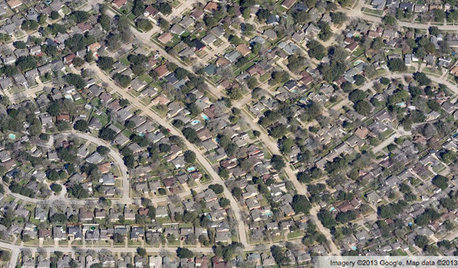Craftsman LT 1000 runs rough, pops thru carb
cobalt327
15 years ago
Related Stories

HOUZZ TOURSMy Houzz: French Country Meets Southern Farmhouse Style in Georgia
Industrious DIYers use antique furniture, collections and warm colors to cozy up their traditional home
Full Story
CURB APPEAL77 Front Doors to Welcome You Home
Crossing the threshold is an event with these doors in a gamut of styles
Full Story
SMALL SPACES8 Challenges of Cottage Living
‘Small rooms or dwellings discipline the mind,’ Leonardo da Vinci once said. Just how much discipline can you handle?
Full Story
KITCHEN DESIGNHouzz Quiz: What Kitchen Countertop Is Right For You?
The options for kitchen countertops can seem endless. Take our quiz to help you narrow down your selection
Full Story
MOST POPULARHow Much Room Do You Need for a Kitchen Island?
Installing an island can enhance your kitchen in many ways, and with good planning, even smaller kitchens can benefit
Full Story
COMMUNITYGet a Bird's-Eye View of America's Housing Patterns
See the big picture of how suburban developments are changing the country's landscape, with aerial photos and ideas for the future
Full Story
ECLECTIC HOMESHouzz Tour: A Storybook House for the Neighborhood
This charming family home incorporates Tudor-style elements, eclectic details and smart planning
Full Story
REMODELING GUIDESWhich Window for Your World?
The view and fresh air from your windows make a huge impact on the experience of being in your house
Full Story
FURNITURE10 Secrets of Successful Secondhand Furniture Shopping
Design professionals offer tips on how, where and what to buy
Full Story
HOUZZ TVHouzz TV: Step Inside an Industrial-Chic Forever Home
See how a former commercial space becomes an art-filled dream home for 2
Full Story





tomplum
fordguy665
Related Professionals
Maple Valley Landscape Architects & Landscape Designers · Foothill Ranch Landscape Architects & Landscape Designers · Garden City Landscape Architects & Landscape Designers · Norwood Landscape Contractors · Bellefontaine Neighbors Landscape Contractors · Deerfield Landscape Contractors · Fort Payne Landscape Contractors · Live Oak Landscape Contractors · Winter Gardens Landscape Contractors · Shenandoah Landscape Contractors · Carol City Window Contractors · Poinciana Window Contractors · Two Rivers Window Contractors · Wilmette Window Contractors · Discovery Bay Window Contractorsmownie
cobalt327Original Author
mownie
cobalt327Original Author
mownie
cobalt327Original Author
cobalt327Original Author
cobalt327Original Author
mownie